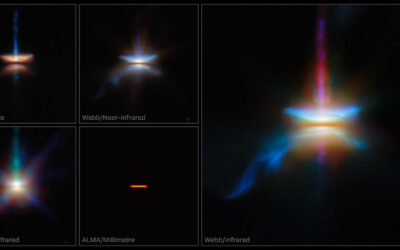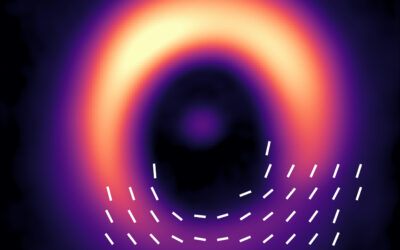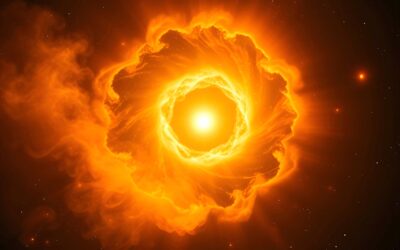A new study led by researchers at University College London (UCL) suggests that the light emitted by temperamental stars, which undergo significant fluctuations over short periods, may be distorting our observations of distant planets. The study, published in The Astrophysical Journal Supplement, reveals that these fluctuations, caused by the existence of both hot and cold regions on a star’s surface, could lead to misinterpretations of exoplanet characteristics, including their size, temperature, and atmospheric composition.
Most of the information we have gathered about planets beyond our solar system—exoplanets—comes from observing how their transits (when a planet passes in front of its host star) cause a dip in the star’s light. By measuring the amount of light blocked during these events, scientists can infer crucial details about the planet, such as its size, and, by studying the way the starlight changes as it passes through the planet’s atmosphere, they can learn more about its atmospheric composition. This technique, known as transit photometry, has been central to exoplanet discovery.
However, the new findings highlight a significant complication in this process. The researchers discovered that some stars undergo dramatic changes in brightness due to magnetic activity on their surfaces. These fluctuations can be particularly significant in stars that have both hotter, brighter regions (called faculae) and colder, darker regions (called starspots). The researchers found that such stellar variability can distort the data collected during exoplanet transits and make it harder to accurately determine key features of exoplanets.
According to Dr. Arianna Saba, the lead author of the study and a Ph.D. graduate from UCL, the team was surprised by the extent of stellar contamination in their data. “We found more stellar contamination of our data than we were expecting,” she said. “This is important for us to know. By refining our understanding of how stars’ variability might affect our interpretations of exoplanets, we can improve our models and make smarter use of the much bigger datasets to come from missions including James Webb, Ariel, and Twinkle.”
The research focused on 20 exoplanets with sizes similar to Jupiter and Neptune. The team found that for about half of these planets, the data had been significantly affected by the variability of their host stars. If the stellar variations were not properly accounted for, scientists might incorrectly estimate a range of planetary features, including the planet’s size, temperature, and the composition of its atmosphere. Misinterpretations of exoplanet data could have far-reaching implications, especially in future studies using larger datasets from advanced space missions.
Alexandra Thompson, a Ph.D. student at UCL and the second author of the paper, explained that disentangling the signal coming from the planet itself versus the light from the star is a significant challenge in exoplanet research. “We learn about exoplanets from the light of their host stars,” she said. “It is sometimes hard to disentangle what is a signal from the star and what is coming from the planet.”
Some stars exhibit more patchy characteristics, where parts of their surface are colder (and darker), while other areas are hotter (and brighter). This variability, caused by strong magnetic activity, has the potential to skew our readings of the exoplanets. For instance, when a planet transits in front of a hotter region (facula), it may appear to block more light, making the planet seem larger or hotter than it is. On the other hand, if the planet passes over a colder starspot, it might appear smaller than it actually is.
Another complication arises when the variation in the star’s light mimics the effects of a planet’s transit altogether, leading researchers to falsely detect a planet when there is none. This is a critical issue that underscores the importance of follow-up observations to confirm the existence of exoplanets. Thompson added, “The reduction in emitted light from a starspot could even mimic the effect of a planet passing in front of a star, leading you to think there might be a planet when there is none.”
The study also found that the distortions in starlight could affect the detection of specific elements and compounds in an exoplanet’s atmosphere. For example, variations in stellar light could obscure or distort the signature of water vapor in the planet’s atmosphere, making it difficult to discern its presence. This could hinder our ability to understand the atmospheric conditions of distant worlds, including the search for potentially habitable exoplanets.
For the study, the team used 20 years of observations from the Hubble Space Telescope, analyzing data from two of the telescope’s instruments: the Space Telescope Imaging Spectrograph (STIS) and the Wide Field Camera 3 (WFC3). The data were processed and analyzed in a standardized way, ensuring that the researchers could make fair comparisons and minimize any biases that might arise from using different data processing methods.
By looking at these data, the researchers compared models that took stellar variability into account with simpler models that ignored it. The team found that in six of the 20 planets, the data fit better with models that accounted for stellar variability, while six other planets appeared to have experienced only minor contamination from their host stars. To assess the level of contamination in the data, the team analyzed the light at visible, near-infrared, and near-ultraviolet wavelengths. They discovered that stellar variability was most evident in the near-UV and visible (optical) regions, compared to the infrared, where stellar effects are less pronounced.
The team proposed two ways to identify whether stellar variability might be distorting the data. One method involves examining the overall shape of the spectrum—the pattern of light at different wavelengths that has passed through the planet. If the pattern can only be explained by the presence of stellar activity, rather than just the planet, it could indicate contamination. The second method involves comparing two observations of the same planet taken at different times. If the two observations differ significantly, this could be a sign that the variations are caused by the star’s activity.
Dr. Saba explained, “One is to look at the overall shape of the spectrum—that is, the pattern of light at different wavelengths that has passed through the planet from the star—to see if this can be explained by the planet alone or if stellar activity is needed.”
The study’s findings highlight the importance of using a range of wavelengths to observe exoplanets in order to accurately interpret their characteristics. Shorter wavelength observations, such as those in the optical region, are particularly useful for identifying stellar contamination, as this is where the effects of stellar variability are most apparent.
The team emphasized that while the potential for misinterpretation exists, the risk is manageable with the right techniques and careful attention to wavelength coverage. As more advanced telescopes, such as the James Webb Space Telescope, continue to collect data, understanding how stellar variability influences our interpretations of exoplanet data will be crucial for improving the accuracy of future exoplanet discoveries.
More information: Arianna Saba et al, A Population Analysis of 20 Exoplanets Observed from Optical to Near-infrared Wavelengths with the Hubble Space Telescope: Evidence for Widespread Stellar Contamination, The Astrophysical Journal Supplement Series (2025). DOI: 10.3847/1538-4365/ad8c3c






